A well-designed staircase offers much more than just a functional purpose. In fact, a staircase can be a focal point and often the first piece of furniture seen by the visitors. In the case of a helical staircase, it gives a unique touch of class to any interior design, be it residential or commercial.
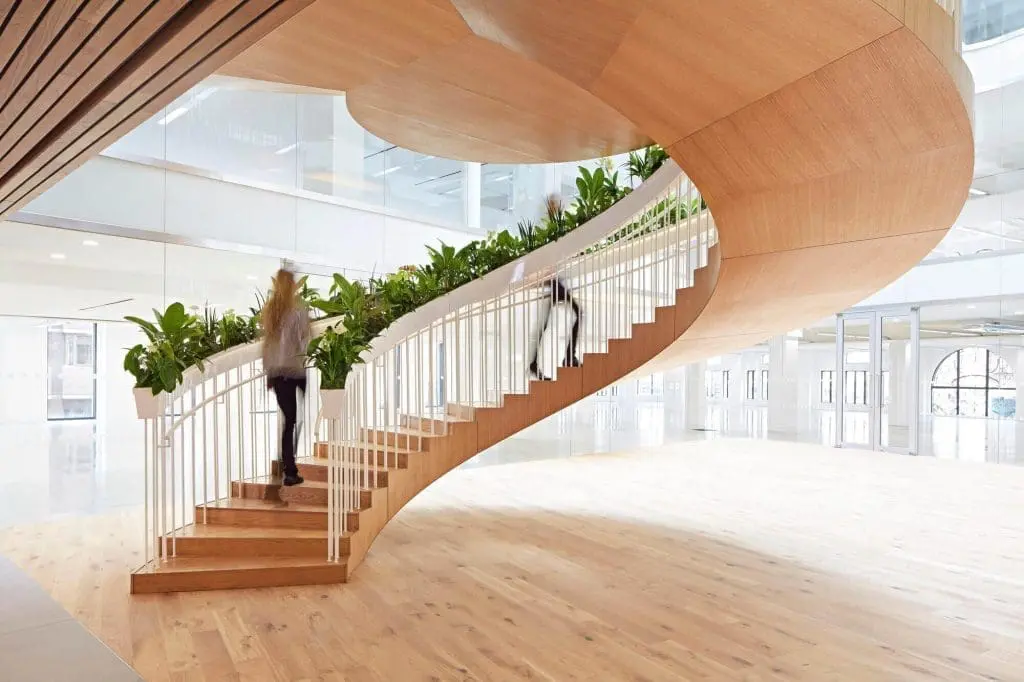
It is a classic staircase design that never goes out of style. Beautiful and complex helical stairs are considered the pinnacle of stair craftsmanship. Below is all the information you need to know about the helical staircase so you can decide whether or not to opt for one in your new home.
What is Helical Staircase?
A helical staircase is designed to have the appearance of a curve or a helix. This curved structure leads you from one level to another by way of flowing circular rotation.
It often forms a continuous “C” shape with a larger, consistent radius. The treads in the helical staircase are wedge-shaped, tapering at one end.
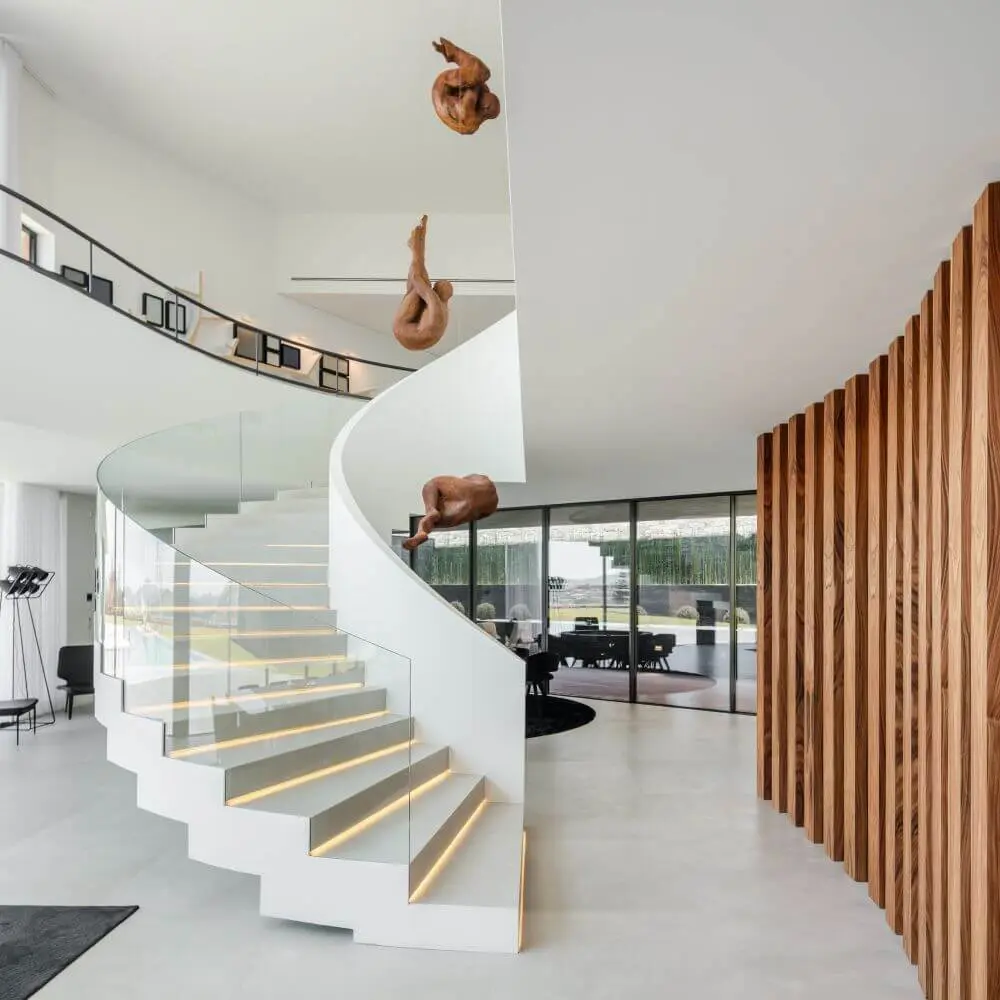
How is it Different from Spiral Staircase?
It is a common misconception that helical and spiral staircases are one and the same. However, they are fundamentally different from each other, both in function and appearance. Below are the few differences between helical and spiral staircases.
Plan
Spiral staircases are mostly circular in plan. However, a squared stairwell may also have a spiral where the treads expand to fit the square space. As for the helical staircase, the plan can be curved, oval, or elliptical.
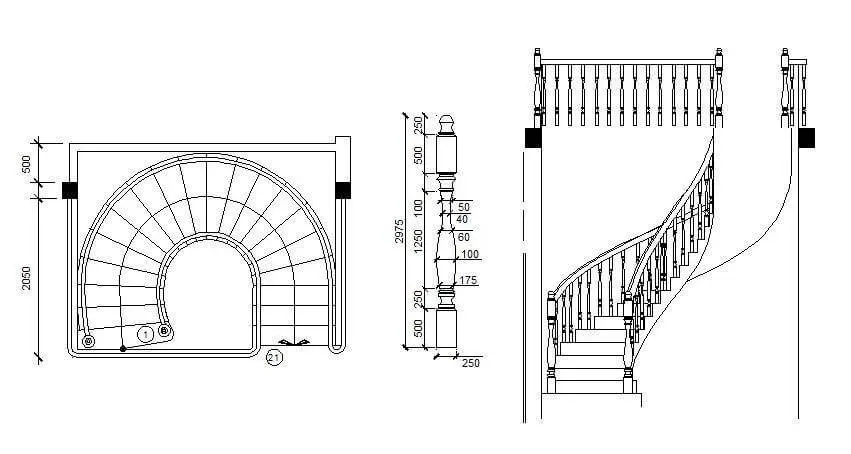
Column
This is another major difference between spiral and helical staircases. Spiral staircases have a central column whereas helical staircases can be more modified and versatile in their shape. Helical staircases don’t need a central column, which makes them a popular choice compared to spiral staircases.
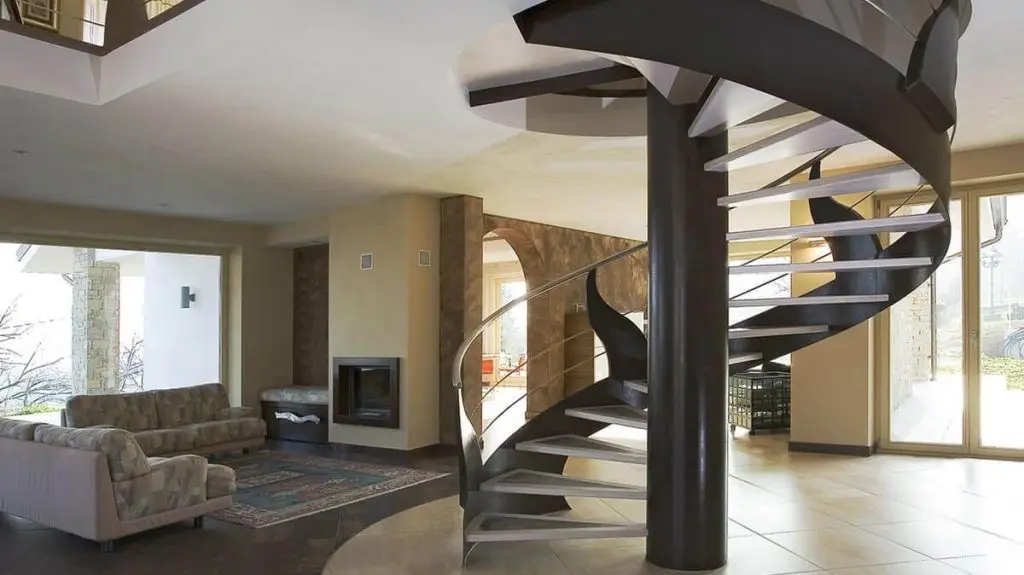
Functionality
In terms of floor space, helical staircases tend to require a large space and a sizeable opening in the floor. In the case of spiral staircases, the space required is very less.
While both helical and spiral staircases have consistent riser heights and tread depths, a helical stair is certainly easier to ascend as the tread depth at the tightest point is much greater.
Advantages of Helical Staircase
1. Space
The fact that helical stairs require more space than spiral staircases isn’t necessarily a disadvantage. Instead, it makes the flight much more luxurious and comfortable. This also creates the opportunity to design the stairs by twisting and turning to fit any configuration of a room.
2. Focal Point
In any design, a focal point is an essential element to elevate the overall design. Luckily, a helical staircase itself acts as a massive focal point. This is why; it is a popular choice for installation in the middle of commercial or high-end residential buildings, from where a person can see the stairs from the entrance.
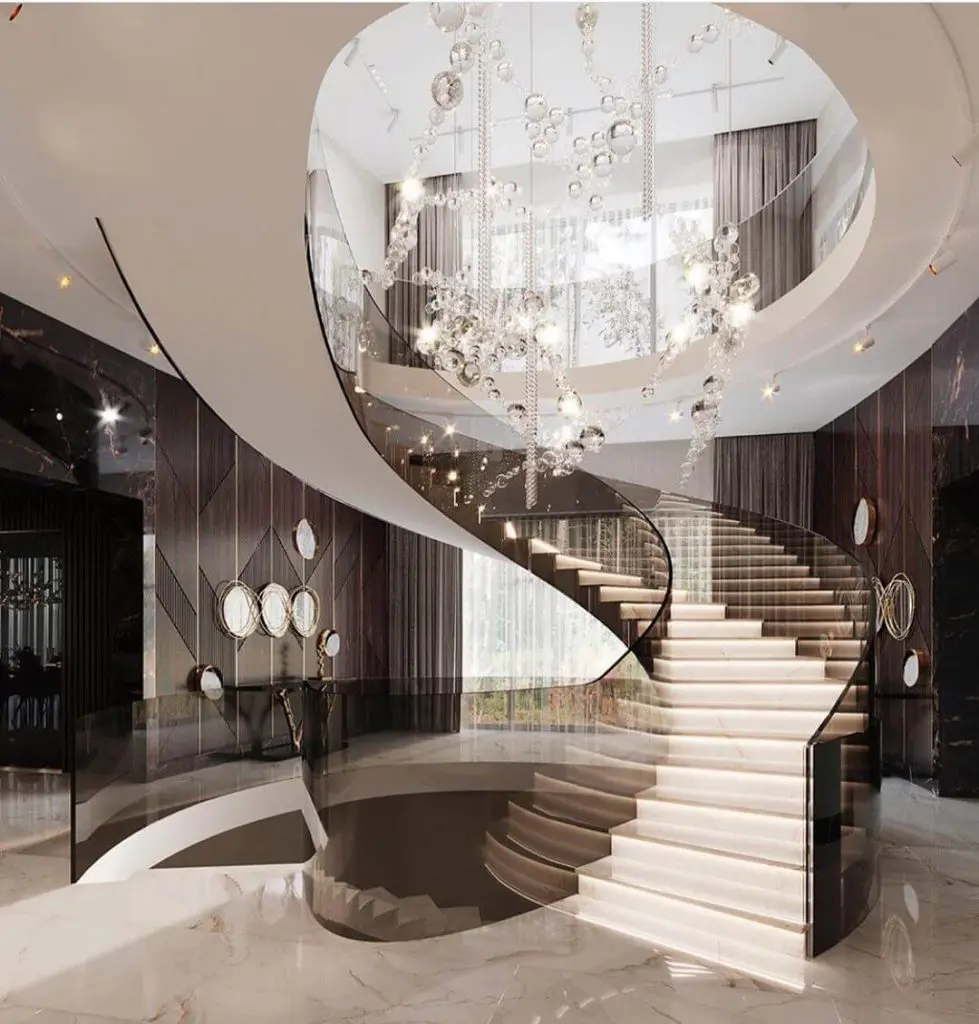
3. Resale value
A beautifully crafted structural element such as a helical stair is a great investment, especially for homeowners. It adds to the aesthetics of your house and increases the resale value significantly.
4. Individuality
Curved staircases, especially helical stairs offer much more versatility and individuality in design as compared to other staircases.
The treads, risers, sizes, angles, and every other element is ever-changing. So, all the aspects of the staircase have to be custom designed and built by professionals.
Disadvantages of Helical Staircase:
1. Expensive Labour
The stringers as well as the handrails are curved in helical staircases. Also, each tread is different from one another. All these things require excellent precision and specialized skill to build properly. Naturally, it will come at a high cost.
2. No Strong Support
Since it doesn’t have a central column like spiral staircases, it is usually free-standing. So, helical staircases have to be strong enough to support them and require a lot of internal support.
3. Unsuitable for Elderly
The curved staircase can be a bit steep and difficult to use for the elderly. The circular movement caused by climbing up or down can make people a bit dizzy.
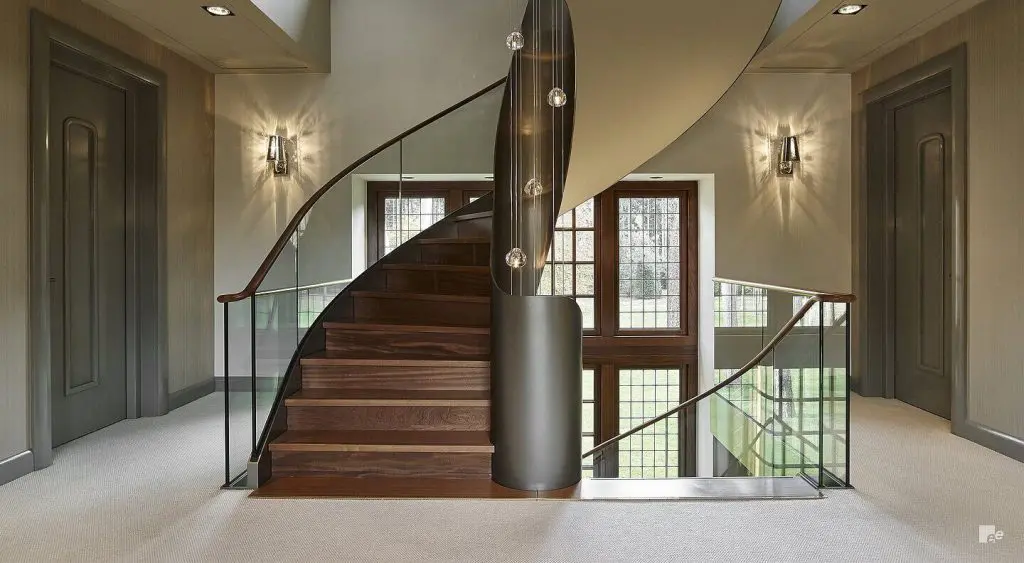
Helical staircases look best when used in open-plan rooms, especially in entrances as they can give a grand opening. If you have the budget, you can decide to opt for it after weighing the pros and cons.
There are dozens of designs that come with helical staircases. Since not all of them are suitable for your home, then determine what type of look you want to create before choosing to build one.
– Tulisha Srivastava





